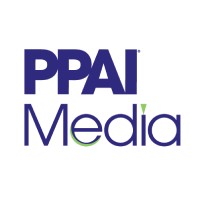The tariffs ordered Feb. 1 on three of the United States’ largest trading partners are expected to have a significant impact across North American markets, including promotional products.
Below, we break down facts about the tariffs, describe the Association’s response, and suggest actions individual members can take.
Editor’s Note: This is a developing situation, and this document will be updated as we learn more.
TARIFF FAQs
What are the tariffs for each country?
- Canada: The original order called for a 25% tariff on most goods imported from Canada, with a lower 10% duty for energy resources. These were paused for 30 days after Canadian Prime Minister Justin Trudeau announced new commitments to border security, including a “fentanyl czar,” on Feb. 3.
- Mexico: The 25% tariff originally proposed on goods imported from Mexico is on hold until March 1 after Mexico’s President Claudia Sheinbaum agreed on Feb. 3 to send troops to the U.S./Mexico border.
- China: A 10% tariff will be levied on goods imported from China. This is on top of other existing tariffs imposed, which range from 7.5% to 25%. (It is less than the increase once floated by candidate Trump.)
Shortly after the new tariffs took effect on Feb. 4, China announced its own tariffs starting Feb. 10 of 15% on American coal and liquefied natural gas and 10% tariffs on crude oil, farm equipment and certain other vehicles. Beijing also announced an investigation of Google and added two U.S. firms that include major apparel brands to its “unreliable entity” list.
The president may increase, expand or remove these tariffs, depending on the actions taken by the other countries (see pauses noted above).
Additional tariffs may also be levied on goods from the European Union and the United Kingdom.
When do the tariffs take effect? The active tariffs (China) go into effect on February 4, 2025, beginning at 12:01 a.m. Eastern.
What about the de minimis exemption? The duty-free de minimis treatment no longer applies for low-value (under $800) shipments of articles subject to these new tariffs.
Why has the president imposed these tariffs? The president is using tariffs as a negotiating tactic to address concerns over trade imbalances, illegal immigration and drug trafficking (particularly fentanyl and its precursors).
WHAT IS PPAI DOING?
PPAI Research has found that most members see tariffs and trade restrictions as the most impactful issues affecting their businesses. The Association sent a letter to congressional leaders in December on the issue and invited members to send their own letters.
This week, the Association will send another letter urging Congress to work toward a balanced trade policy that protects American interests while ensuring that small businesses, such as those in the promotional products industry, are not disproportionately burdened.
PPAI will provide the text of that letter later this week so members can use it as a template for your own letters to your representatives and senators.
WHAT CAN I DO?
Tell PPAI how these tariffs affect your business – click here to fill out our two-minute survey. Your input will help us better understand the impact of these tariffs so that we can advocate more effectively for our members.
Call your representative and senators. Find your members of Congress here.
- NOTE: You’ll have to click through to each official’s website to locate their contact information. Each office handles this differently – some feature a “Contact Me” button at the top of the homepage, while others are less prominent.
Download a copy of PPAI’s letter here to customize and send it to your representative and senators.
- NOTE: It’s best to send each email individually to avoid getting caught in the spam filter for the Capitol email system.


